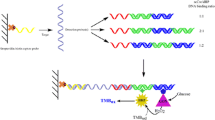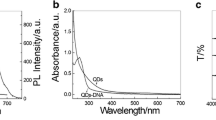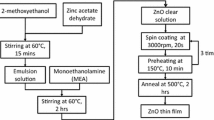Abstract
An ultrasensitive enzyme-free electrochemical sandwich DNA biosensor is described for the detection of ssDNA oligonucleotides. A DNA sequence derived from the genom of Helicobacter pylori was selected as a model target DNA. The DNA assay was realized through catching target DNA on capture DNA immobilized gold electrode; then labeling the target DNA with reporter DNA (rpDNA) and initiator DNA (iDNA) co-modified gold nanoparticles (AuNPs). The high density of iDNAs serves as one of the amplification strategies. The iDNA triggers hybridization chain reaction (HCR) between two hairpins. This leads to the formation of a long dsDNA concatamer strand and represents one amplification strategy. The electrochemical probe [Ru(NH3)5L]2+, where L stands for 3-(2-phenanthren-9-ylvinyl)pyridine, intercalated into dsDNA chain. Multiple probe molecules intercalate into one dsDNA chain, serving as one amplification strategy. The electrode was subjected to differential pulse voltammetry for signal acquisition, and the oxidation peak current at −0.28 V was recorded. On each AuNP, 240 iDNA and 25 rpDNA molecules were immobilized. Successful execution of HCR at the DNA-modified AuNPs was confirmed by gel electrophoresis and hydrodynamic diameter measurements. Introduction of HCR significantly enhances the DNA detection signal intensity. The assay has two linear ranges of different slopes, one from 0.01 fM to 0.5 fM; and one from 1 fM to 100 fM. The detection limit is as low as 0.68 aM. Single mismatch DNA can be differentiated from the fully complementary DNA. Conceivably, this highly sensitive and selective assay provides a general method for detection of various kinds of DNA.

Schematic representation of the detection and the amplification principles of the electrochemical sandwich DNA assay. Purple curl: Captured DNA; Green curl: Reporter DNA; Orange curl: HCR initiator DNA; Yellow solid-circle: Gold nanoparticle; H1 and H2: Two hairpin DNA; [Ru(NH3)5L]2+: Signal probe.







Similar content being viewed by others
References
Pournaghi-Azar MH, Alipoura E, Zununi S, Froohandeh H, Hejazi MS (2008) Direct and rapid electrochemical biosensing of the human interleukin-2 DNA in unpurified polymerase chain reaction (PCR)-amplified real samples. Biosens Bioelectron 24:524–530
Huang S, Feng MM, Li JW, Liu Y, Xiao Q (2018) Voltammetric determination of attomolar levels of a sequence derived from the genom of hepatitis B virus by using molecular beacon mediated circular strand displacement and rolling circle amplification. Microchim Acta 185:206
Saiki RK, Scharf S, Faloona F, Mullis KB, Horn GT, Erlich HA, Arnheim N (1985) Enzymatic amplification of beta-globin genomic sequences and restriction site analysis for diagnosis of sickle cell anemia. Science 230:1350–1354
Makrigiorgos GM, Chakrabarti S, Zhang Y, Kaur M, Price BD (2002) A PCR-based amplification method retaining the quantitative difference between two complex genomes. Nat Biotechnol 20:936–939
Schweitzer B, Kingsmore S (2001) Combining nucleic acid amplification and detection. Curr Opin Biotechnol 12:21–27
Nam JM, Stoeva SI, Mirkin CA (2004) Bio-bar-code-based DNA detection with PCR-like sensitivity. J Am Chem Soc 126:5932–5933
Yu XX, Chai Y, Jiang J, Cui H (2012) Sensitive ECL sensor for sequence-specific DNA from Mycobacterium tuberculosis based on N-(aminobutyl)-N-ethylisoluminol functionalized gold nanoparticles labeling. J Photochem Photobiol A 241:45–51
Dong XY, Mi XN, Zhang L, Liang TM, Xu JJ, Chen HY (2012) DNAzyme-functionalized Pt nanoparticles/carbon nanotubes for amplified sandwich electrochemical DNA analysis. Biosens Bioelectron 38:337–341
Cui HF, Xu TB, Sun YL, Zhou AW, Cui YH, Liu W, Luong JHT (2015) Hairpin DNA as a biobarcode modified on gold nanoparticles for electrochemical DNA detection. Anal Chem 87:1358–1365
Ye Y, Liu Y, He S, Xu X, Cao X, Ye Y, Zheng H (2018) Ultrasensitive electrochemical DNA sensor for virulence invA gene of Salmonella using silver nanoclusters as signal probe. Sens Actuator B-Chem 272:53–59
Thiruppathiraja C, Kamatchiammal S, Adaikkappan P, Santhosh DJ, Alagar M (2011) Specific detection of Mycobacterium sp. genomic DNA using dual labeled gold nanoparticle based electrochemical biosensor. Anal Biochem 417:73–79
Hsieh KW, Patterson AS, Ferguson BS, Plaxco KW, Soh HT (2012) Rapid, sensitive, and quantitative detection of pathogenic DNA at the point of care through microfluidic electrochemical quantitative loop-mediated isothermal amplification. Angew Chem-Int Edit 51:4896–4900
Chen Y, Xu J, Su J, Xiang Y, Yuan R, Chai YQ (2012) In situ hybridization chain reaction amplification for universal and highly sensitive electrochemiluminescent detection of DNA. Anal Chem 84:7750–7755
Wang XZ, Ge L, Yu YF, Dong SS, Li F (2015) Highly sensitive electrogenerated chemiluminescence biosensor based on hybridization chain reaction and amplification of gold nanoparticles for DNA detection. Sens Actuator B-Chem 220:942–948
Chen Z, Liu Y, Xin C, Zhao J, Liu S (2018) A cascade autocatalytic strand displacement amplification and hybridization chain reaction event for label-free and ultrasensitive electrochemical nucleic acid biosensing. Biosens Bioelectron 113:1–8
Deng X, Wang C, Gao Y, Li J, Wen W, Zhang X, Wang S (2018) Applying strand displacement amplification to quantum dots-based fluorescent lateral flow assay strips for HIV-DNA detection. Biosens Bioelectron 105:211–217
Shi AQ, Wang J, Han XW, Fang X, Zhang YZ (2014) A sensitive electrochemical DNA biosensor based on gold nanomaterial and graphene amplified signal. Sens Actuator B-Chem 200:206–212
Wang J, Li HG, Li TT, Ling LS (2018) Determination of bacterial DNA based on catalytic oxidation of cysteine by G-quadruplex DNAzyme generated from asymmetric PCR: application to the colorimetric detection of Staphylococcus aureus. Microchim Acta 185:410
Li Z, Mao GB, Du MY, Tian SB, Niu LQ, Ji XH, He ZK (2019) A fluorometric turn-on aptasensor for mucin 1 based on signal amplification via a hybridization chain reaction and the interaction between a luminescent ruthenium(II) complex and CdZnTeS quantum dots. Microchim Acta 186:233
Zhou C, Zou H, Sun C, Ren D, Chen J, Li Y (2018) Signal amplification strategies for DNA-based surface plasmon resonance biosensors. Biosens Bioelectron 117:678–689
Ikbal J, Lim GS, Gao ZQ (2015) The hybridization chain reaction in the development of ultrasensitive nucleic acid assays. Trends Anal Chem 64:86–99
Dirks RM, Pierce NA (2004) Triggered amplification by hybridization chain reaction. Proc Natl Acad Sci U S A 101:15275–15278
Ge SG, Zhao JG, Wang SP, Lan FF, Yan M, Yu JH (2018) Ultrasensitive electrochemiluminescence assay of tumor cells and evaluation of H2O2 on a paper-based closed-bipolar electrode by in-situ hybridization chain reaction amplification. Biosens Bioelectron 102:411–417
Zhou Q, Lin YX, Zhang KY, Li MJ, Tang DP (2018) Reduced graphene oxide/BiFeO3 nanohybrids-based signal-on photoelectrochemical sensing system for prostate-specific antigen detection coupling with magnetic microfluidic device. Biosens Bioelectron 101:146–152
Cover TL, Blaser MJ (2009) Helicobacter pylori in health and disease. Gastroenterology 136:1863–1873
Salama NR, Hartung ML, Muller A (2013) Life in the human stomach: persistence strategies of the bacterial pathogen helicobacter pylori. Nat Rev Microbiol 11:385–399
Chen LL, Cui HF, Fan SF, Li ZY, Han SY, Ma X, Luo SW, Song XJ, Lv QY (2018) Detection of helicobacter pylori in dental plaque using a DNA biosensor for noninvasive diagnosis. RSC Adv 8:21075–21083
García T, Revenga-Parra M, Abruna H, Pariente F, Lorenzo E (2008) Single-mismatch position-sensitive detection of DNA based on a bifunctional ruthenium complex. Anal Chem 80:77–84
García T, Casero E, Revenga-Parra M, Martín-Benito J, Pariente F, Vázquez L, Lorenzo E (2008) Architectures based on the use of gold nanoparticles and ruthenium complexes as a new route to improve genosensor sensitivity. Biosens Bioelectron 24:184–190
Brown AP, Anson FC (1977) Molecular anchors for the attachment of metal complexes to graphite electrode surfaces. J Electroanal Chem 83:203–206
Kuehn CG, Taube H (1976) Ammineruthenium complexes of hydrogen sulfide and related sulfur ligands. J Am Chem Soc 98:689–702
Frens G (1973) Controlled nucleation for the regulation of the particle size in monodisperse gold suspensions. Nature (London). Phys Sci 241:20–22
Rance GA, Marsh DH, Khlobystov AN (2008) Extinction coefficient analysis of small alkanethiolate-stabilised gold nanoparticles. Chem Phys Lett 460:230–236
Steel AB, Herne TM, Tarlov MJ (1998) Electrochemical quantitation of DNA immobilized on gold. Anal Chem 70:4670–4677
Storhoff JJ, Elghanian R, Mucic RC, Mirkin CA, Letsinger RL (1998) One-pot colorimetric differentiation of polynucleotides with single base imperfections using gold nanoparticle probes. J Am Chem Soc 120:1959–1964
Acknowledgments
This work was financially supported by the National Natural Science Foundation of China (NSFC 21345007), the Plan for Scientific Innovation Talent of Henan Province to H. F. Cui (Grant number 154200510007), the Natural Science Foundation of Henan Province (Grant number 182300410314), and the Henan Open-up and Collaboration Program of Science and Technology (Grant number 132106000070).
Author information
Authors and Affiliations
Corresponding authors
Electronic supplementary material
ESM 1
(DOCX 773 kb)
Rights and permissions
About this article
Cite this article
Lv, MM., Fan, SF., Wang, QL. et al. An enzyme-free electrochemical sandwich DNA assay based on the use of hybridization chain reaction and gold nanoparticles: application to the determination of the DNA of Helicobacter pylori. Microchim Acta 187, 73 (2020). https://doi.org/10.1007/s00604-019-3999-z
Received:
Accepted:
Published:
DOI: https://doi.org/10.1007/s00604-019-3999-z




